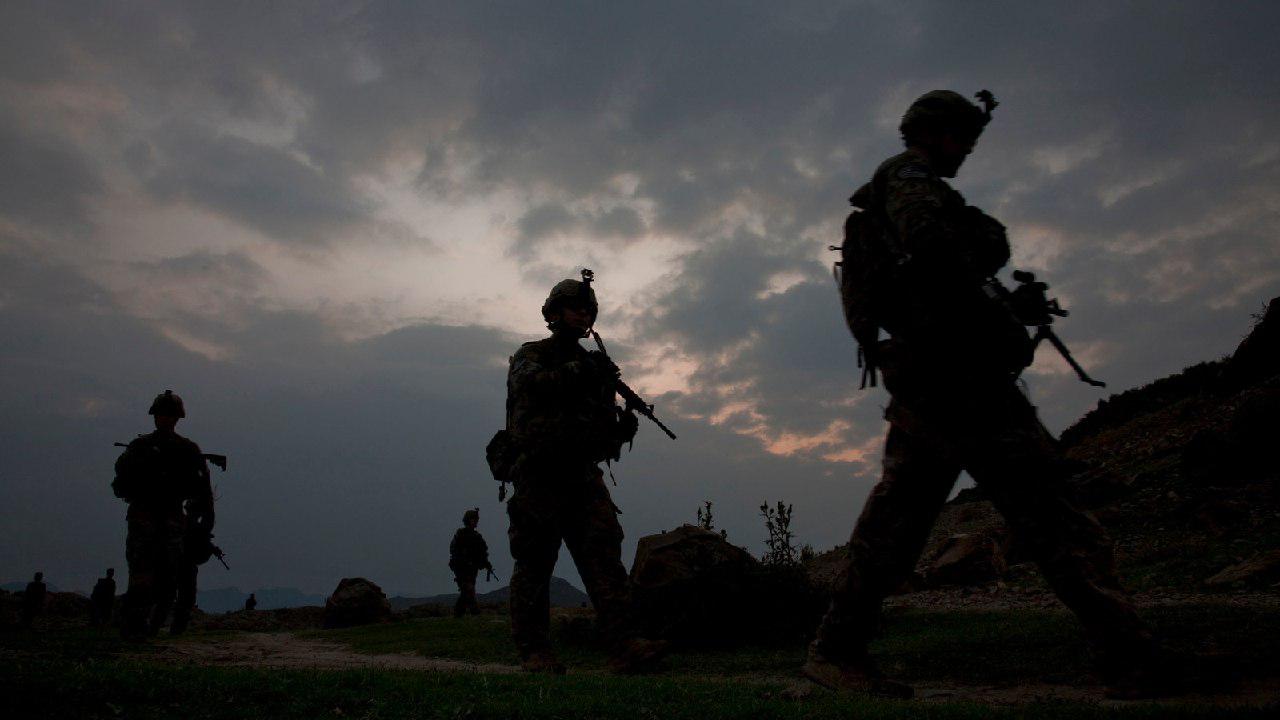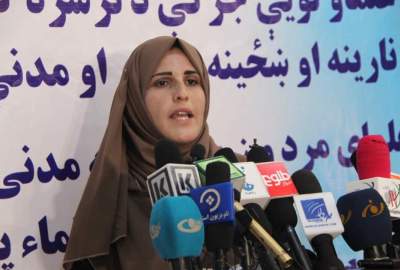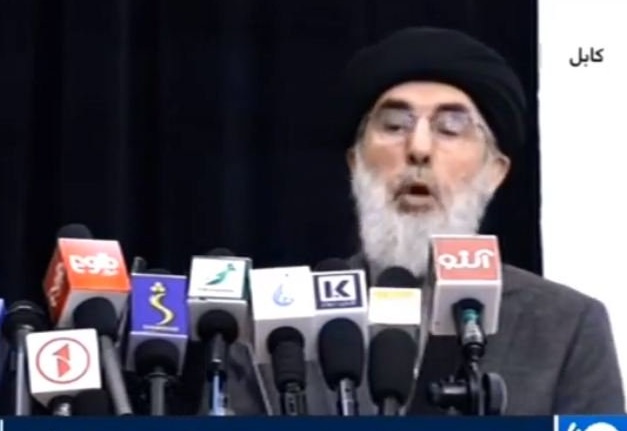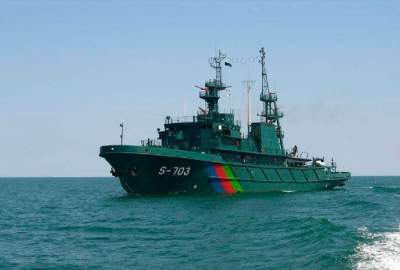Including the C.I.A.’s presence in negotiations with the Taliban is Washington’s latest effort to use what bargaining chips it has left to advance the peace plan.
Publish dateSaturday 18 April 2020 - 09:37
Story Code : 208005
WASHINGTON — The United States is considering pulling back front-line C.I.A. personnel from bases in Afghanistan, according to U.S. officials, as part of the American government’s effort to further reduce violence in the country in the wake of its landmark peace agreement with the Taliban.
The deliberations over the C.I.A. presence in the country are part of larger discussions about pulling back international forces to push forward the peace plan, which shows signs of floundering amid continuing violence.
Top Taliban leaders have demanded reductions in the C.I.A. presence in the country alongside U.S. troops, something that until now American negotiators have resisted. There are thought to be several hundred C.I.A. officers and contractors in Afghanistan, a number that fluctuates often, and it is perceived as one of the agency’s largest presences outside of the Washington area.
Yet one plan, lobbied by Trump administration officials in September, actually included increasing the C.I.A. presence in the country as American forces pulled out.
C.I.A. personnel operate in various places around the country, advising militia groups. The operations began as part of an effort to hunt Al Qaeda, in the earlier years of the now 18-year war, before shifting to targeting organizations including the Haqqani Taliban, among the most violent groups in Afghanistan and a significant source of income for the Taliban.
One move being discussed would relocate agency personnel to the embassy in Kabul, enabling some level of American advice to militia groups operating under the oversight of Afghanistan’s intelligence service. Officials cautioned that deliberations continued and various plans were under consideration.
Pulling C.I.A. advisers away from the front lines is a key demand of Taliban and Haqqani leaders, American officials have known. But any withdrawal of the agency will be done alongside the broader withdrawal of American military advisers — not in isolation from the broader peace plan, according to current and former American officials.
Including the C.I.A.’s presence in negotiations with the Taliban is Washington’s latest effort to use what bargaining chips it has left with the insurgent group. American forces already are drawing down to 8,600 troops from roughly 12,000 with an aspirational timeline of leaving the country altogether in just over a year.
American negotiators believe that to save the peace plan they need to find some way to stop the Taliban from brutalizing Afghan forces. Getting the Taliban to ratchet back attacks on Afghan troops and police, American officials said, is the best hope to accelerate the peace process between the Afghan government in Kabul and Taliban leadership. But even preliminary talks, regarding the release of prisoners on both sides, have run into complications.
But, at its core, the Taliban’s move to curtail the agency’s operations is centered around its income stream, specifically the Haqqani’s network of illicit and legal operations that make up a significant chuck of the insurgent group’s coffers, the officials said. The Haqqani Taliban is known to run mob-like extortion rings as well as smuggling drugs, people and weapons over the Afghan-Pakistan border.
The notion of “reduced violence” in Afghanistan has been a moving target for American officials for weeks, as the Taliban claim to be upholding the signed agreement while killing Afghan forces in the country’s hinterlands at a level that military officials see as unacceptable.
On Wednesday, at least 13 Afghan soldiers were killed in Logar Province when Taliban fighters attacked their checkpoint, and more than 30 pro-government forces have been killed in the last week, according to data compiled by The New York Times.
The Taliban have accused the Americans of violating the deal when U.S. air support is called to help beleaguered Afghan units or Afghan units attack Taliban forces. The insurgent group has also refused to consider a cease-fire without the release of 5,000 prisoners held by the Afghan government.
American officials have plainly rejected the Taliban assertions, saying that the United States has upheld its end of the agreement.
The initial reduction in violence, a seven-day period at the end of February agreed upon by both the United States and the Taliban as a precursor to the agreement, was expected to continue following the signing on Feb. 29 in Doha, Qatar. But shortly afterward, the Taliban stepped up attacks throughout the country almost simultaneously as the government in Kabul dealt with the initial novel coronavirus cases that had flooded over the western border with Iran.
One of the best known agency-advised militia groups is the Khost Protection Force, operating in eastern Afghanistan. As the main Afghan unit commanded by the Afghan National Directorate of Security — the country’s C.I.A. equivalent — and supported by agency personnel and American military advisers, the Khost Protection Force has been championed by many U.S. officials as one of the most effective military forces in Afghanistan.
The group’s ties to the C.I.A. have been critical to allow that military support to flow during operations against the Haqqanis and other targets.
But it is also among the most criticized parts of the American war effort. The Khost Protection Force has been accused by human rights groups and local Afghans of operating in a brutal, lawless matter. Some Afghans have said that it and other militia networks backed by the Afghan government’s intelligence service are responsible for hundreds, if not thousands, of innocent deaths.
While there are ways for advising efforts to continue remotely, former officials said that when it came to overseeing the militias — and preventing them from causing civilian casualties or acting brazenly — proximity was vital.
Any decision to deprive the protection force of its agency advisers will most likely have far-reaching implications for its units scattered across the country. The Khost group’s primary strike force, however, could be based out of Kabul and still be somewhat effective working more directly with C.I.A. officers, said American officials.
Still, the withdrawal of Americans from front-line positions and pulling them back to Kabul, whether they are military or intelligence advisers, will have other effects, said former officials. Without American eyes and ears around Afghanistan, it will be harder to ensure that the fragile alliances between the country’s diaspora of tribes and local power holders and the American-backed government in Kabul remain.
“What is important to the United States government is that the Taliban and the Afghan government work to prevent a terrorist group from establishing itself again in Afghanistan, creating a state within a state, and eventually conducting another international terrorist attack,” said Lisa Maddox, a former C.I.A. officer.
Ms. Maddox is featured in a new documentary, “The Longest War,” and argues that there is no alternative to the peace deal.
“It is an endless war,” she said. “We are not winning it. Nobody is really winning it. We are going to have to make concessions and it is a difficult balance to strike. I don’t envy our negotiators.”
Pulling back C.I.A. and other American advisers from the front lines could have other implications for ongoing operations.
In late January, Mark R. Frerichs, a former Navy diver and a civil engineer was who working as a government contractor, was captured and taken hostage in Khost Province, triggering a countrywide hunt. While White House officials did not want his capture to derail the peace deal, since the agreement was signed, officials have said securing Mr. Frerichs’ release is a top priority.
Some intelligence officials believe the Haqqanis have probably moved him across the border to Pakistan, and say that the closer advisers are to the border area, the more likely they are to get information.
source: NYtimes
The deliberations over the C.I.A. presence in the country are part of larger discussions about pulling back international forces to push forward the peace plan, which shows signs of floundering amid continuing violence.
Top Taliban leaders have demanded reductions in the C.I.A. presence in the country alongside U.S. troops, something that until now American negotiators have resisted. There are thought to be several hundred C.I.A. officers and contractors in Afghanistan, a number that fluctuates often, and it is perceived as one of the agency’s largest presences outside of the Washington area.
Yet one plan, lobbied by Trump administration officials in September, actually included increasing the C.I.A. presence in the country as American forces pulled out.
C.I.A. personnel operate in various places around the country, advising militia groups. The operations began as part of an effort to hunt Al Qaeda, in the earlier years of the now 18-year war, before shifting to targeting organizations including the Haqqani Taliban, among the most violent groups in Afghanistan and a significant source of income for the Taliban.
One move being discussed would relocate agency personnel to the embassy in Kabul, enabling some level of American advice to militia groups operating under the oversight of Afghanistan’s intelligence service. Officials cautioned that deliberations continued and various plans were under consideration.
Pulling C.I.A. advisers away from the front lines is a key demand of Taliban and Haqqani leaders, American officials have known. But any withdrawal of the agency will be done alongside the broader withdrawal of American military advisers — not in isolation from the broader peace plan, according to current and former American officials.
Including the C.I.A.’s presence in negotiations with the Taliban is Washington’s latest effort to use what bargaining chips it has left with the insurgent group. American forces already are drawing down to 8,600 troops from roughly 12,000 with an aspirational timeline of leaving the country altogether in just over a year.
American negotiators believe that to save the peace plan they need to find some way to stop the Taliban from brutalizing Afghan forces. Getting the Taliban to ratchet back attacks on Afghan troops and police, American officials said, is the best hope to accelerate the peace process between the Afghan government in Kabul and Taliban leadership. But even preliminary talks, regarding the release of prisoners on both sides, have run into complications.
But, at its core, the Taliban’s move to curtail the agency’s operations is centered around its income stream, specifically the Haqqani’s network of illicit and legal operations that make up a significant chuck of the insurgent group’s coffers, the officials said. The Haqqani Taliban is known to run mob-like extortion rings as well as smuggling drugs, people and weapons over the Afghan-Pakistan border.
The notion of “reduced violence” in Afghanistan has been a moving target for American officials for weeks, as the Taliban claim to be upholding the signed agreement while killing Afghan forces in the country’s hinterlands at a level that military officials see as unacceptable.
On Wednesday, at least 13 Afghan soldiers were killed in Logar Province when Taliban fighters attacked their checkpoint, and more than 30 pro-government forces have been killed in the last week, according to data compiled by The New York Times.
The Taliban have accused the Americans of violating the deal when U.S. air support is called to help beleaguered Afghan units or Afghan units attack Taliban forces. The insurgent group has also refused to consider a cease-fire without the release of 5,000 prisoners held by the Afghan government.
American officials have plainly rejected the Taliban assertions, saying that the United States has upheld its end of the agreement.
The initial reduction in violence, a seven-day period at the end of February agreed upon by both the United States and the Taliban as a precursor to the agreement, was expected to continue following the signing on Feb. 29 in Doha, Qatar. But shortly afterward, the Taliban stepped up attacks throughout the country almost simultaneously as the government in Kabul dealt with the initial novel coronavirus cases that had flooded over the western border with Iran.
One of the best known agency-advised militia groups is the Khost Protection Force, operating in eastern Afghanistan. As the main Afghan unit commanded by the Afghan National Directorate of Security — the country’s C.I.A. equivalent — and supported by agency personnel and American military advisers, the Khost Protection Force has been championed by many U.S. officials as one of the most effective military forces in Afghanistan.
The group’s ties to the C.I.A. have been critical to allow that military support to flow during operations against the Haqqanis and other targets.
But it is also among the most criticized parts of the American war effort. The Khost Protection Force has been accused by human rights groups and local Afghans of operating in a brutal, lawless matter. Some Afghans have said that it and other militia networks backed by the Afghan government’s intelligence service are responsible for hundreds, if not thousands, of innocent deaths.
While there are ways for advising efforts to continue remotely, former officials said that when it came to overseeing the militias — and preventing them from causing civilian casualties or acting brazenly — proximity was vital.
Any decision to deprive the protection force of its agency advisers will most likely have far-reaching implications for its units scattered across the country. The Khost group’s primary strike force, however, could be based out of Kabul and still be somewhat effective working more directly with C.I.A. officers, said American officials.
Still, the withdrawal of Americans from front-line positions and pulling them back to Kabul, whether they are military or intelligence advisers, will have other effects, said former officials. Without American eyes and ears around Afghanistan, it will be harder to ensure that the fragile alliances between the country’s diaspora of tribes and local power holders and the American-backed government in Kabul remain.
“What is important to the United States government is that the Taliban and the Afghan government work to prevent a terrorist group from establishing itself again in Afghanistan, creating a state within a state, and eventually conducting another international terrorist attack,” said Lisa Maddox, a former C.I.A. officer.
Ms. Maddox is featured in a new documentary, “The Longest War,” and argues that there is no alternative to the peace deal.
“It is an endless war,” she said. “We are not winning it. Nobody is really winning it. We are going to have to make concessions and it is a difficult balance to strike. I don’t envy our negotiators.”
Pulling back C.I.A. and other American advisers from the front lines could have other implications for ongoing operations.
In late January, Mark R. Frerichs, a former Navy diver and a civil engineer was who working as a government contractor, was captured and taken hostage in Khost Province, triggering a countrywide hunt. While White House officials did not want his capture to derail the peace deal, since the agreement was signed, officials have said securing Mr. Frerichs’ release is a top priority.
Some intelligence officials believe the Haqqanis have probably moved him across the border to Pakistan, and say that the closer advisers are to the border area, the more likely they are to get information.
source: NYtimes
Source : Afghan Voice Agency(AVA)
avapress.net/vdce7v8wnjh877i.1kbj.html
Tags
Top hits












